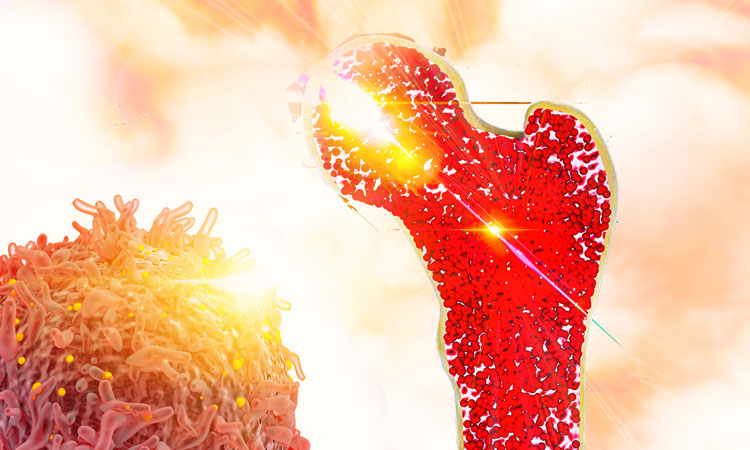Opportune identification of novel multiple myeloma target
Posted: 14 January 2022 | Mandy Parrett (Drug Target Review) | No comments yet
During investigations into the tropical disease Buruli ulcer, researchers have instead identified a promising new avenue for potential treatments for multiple myeloma.


Multiple myeloma, also known as Kahler’s disease, is a cancer of the bone marrow wherein plasma cells proliferate at an uncontrolled rate. These white blood cells usually produce antibodies to help the body fight infection, but in this cancer the plasma cells crowd out the regular blood cells and cause bones to deteriorate. Proteasome inhibitors are a staple treatment option in current regimes, demonstrating success in early diagnosed cancers; however, resistance often develops leading to subsequent relapses.
In a happy twist of fate, however, researchers at Institut Pasteur have inadvertently discovered a novel approach that shows great promise for improved treatment.
While studying the neglected tropical disease Buruli ulcer, scientists identified a new therapeutic target that could bypass this resistance, by selectively killing the cancer cells.
Buruli ulcer is caused by bacterial infection with Mycobacterium ulcerans and can provoke severe and irreversible skin necrosis. Lesions are due to bacterial production of a toxin called mycolactone in infected skin. In 2016, the research team identified that mycolactone causes the clinical manifestations of Buruli ulcer by targeting the translocon Sec61.
As explained in the report in EMBO Molecular Medicine, the translocon is a channel anchored in the wall of a cell compartment called the endoplasmic reticulum that plays a crucial role in the synthesis of proteins that are destined to be secreted in the extracellular medium. The translocon controls the import of these proteins into the endoplasmic reticulum and is the main gateway to the secretory pathway. By blocking Sec61, mycolactone retains these proteins inside the cell and provokes their degradation by the proteasome, which can cause programmed cell death.
Using murine models and tumours from patient biopsies, researchers demonstrated that mycolactone is highly toxic to multiple myeloma cells, including those that have become resistant to proteasome inhibitors. Importantly, this effect is achieved at doses that are non-toxic to normal cells.
In addition, they showed that mycolactone and proteasome inhibitors work in synergy to promote each other’s anti-cancer effects.
“This study provides the proof of concept that the translocon is a new therapeutic target in multiple myeloma. The next step will be to identify drug-like molecules inhibiting Sec61, which could constitute a new treatment for this cancer,” explains Caroline Demangel, head of the Immunobiology of Infection Unit at the Institut Pasteur.
This study was published in EMBO Molecular Medicine and involved the work of scientists from the Institut Pasteur and Inserm, in collaboration with the University of Paris and the Saint Louis Hospital (AP-HP).
Related topics
Disease Research, Drug Targets, Molecular Biology, Molecular Targets, Oncology, Precision Medicine, Targets
Related conditions
Buruli ulcer, Kahler's disease, multiple myeloma
Related organisations
EMBO Molecular Medicine, Inserm, Institut Pasteur, Saint Louis Hospital (AP-HP), University of Paris
Related people
Caroline Demangel








